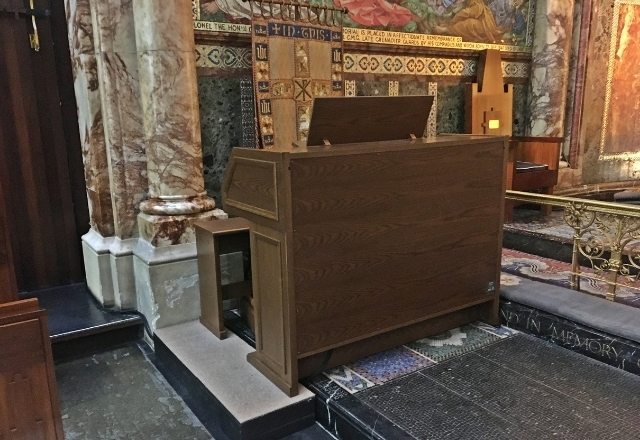I am indebted to the Household Division web site for the information below which is a truncated version of their much fuller history.
History of the Royal Military Chapel (Guards’ Chapel)
The Royal Military Chapel, or the Guards’ Chapel as it is more generally known, stands in Birdcage Walk on the south side of St. James’s Park and is the spiritual home of the Household Division. The present chapel was built in 1963 but rose from the ashes of the original chapel, destroyed by a flying bomb on 18th June 1944.
The chapel’s origins go back to the construction of Wellington Barracks in 1834. The first service took place on 6th May 1838 but the interior was very plain and it was to be some years before improvements began.
In 1850 a small committee of officers and their friends put up a block of tenements in the nearby Francis Street and made them available at very cheap rents to married soldiers with families, who would otherwise be living in squalid conditions in the barracks. It was a success until someone pointed out that it was illegal for officers to rent accommodation to soldiers. The War Office, however, recognised the value of this project and bought out the committee and took over what then became the army’s first married quarters outside barracks.
The committee decided to use the money received from this sale to restore the interior of the chapel and the distinguished architect, George Edmund Street, was commissioned to prepare plans for the construction of an apse to form a chancel and re-design the chapel in the Lombardo Byzantine style.
On Sunday 18th June 1944 disaster struck. At 11.10 am during morning service, the chapel was hit by a flying bomb which entered at the western end and exploded, killing 121 soldiers and civilians, including the Director of Music and five musicians from the Band of the Coldstream Guards. The chapel was completely destroyed with the exception of the apse, but the six silver candlesticks were unmoved by the explosion and the candles remained burning.
A temporary chapel was erected in a ‘Romney Hut’ attached to the undamaged apse and this was used from Christmas Day 1945 until 1962 when the rebuilding began.
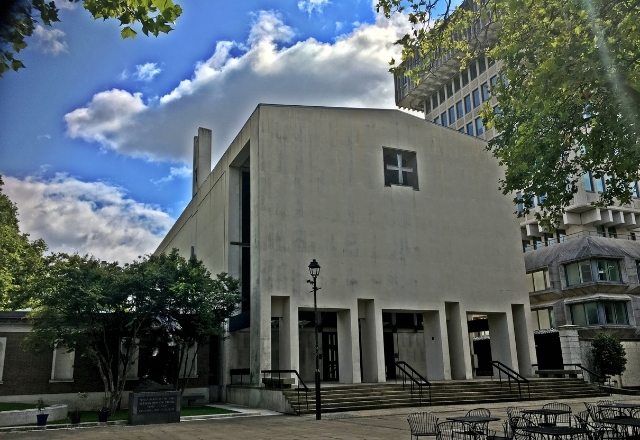
The rebuilding of the chapel by architect Bruce George was to incorporate the original apse and provide a home for the display of the many military standards and colours earned over the many engagements of the past centuries. These now hang from the north and south walls high above the pews.
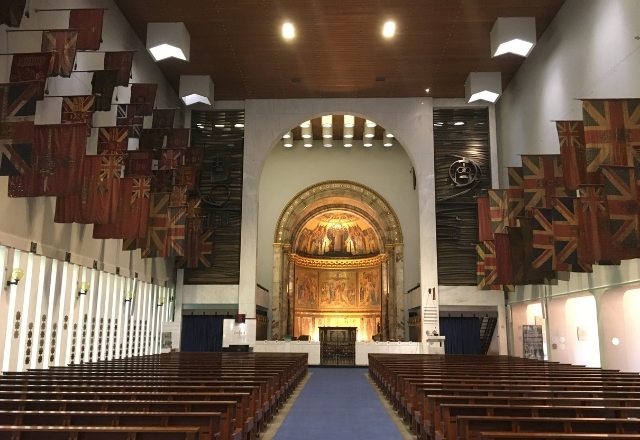
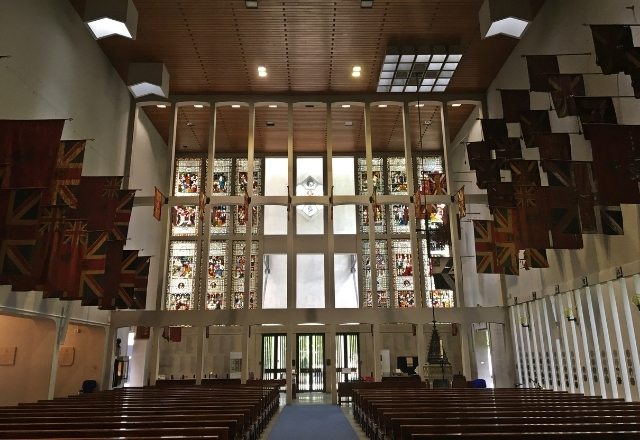
The installation of a Viscount Hire Organ
The current pipe organ incorporates parts of the pipework and soundboards from the organ once in the drawing room at Glyndebourne, which itself had used parts of an instrument originally built by Hill Norman and Beard for Canizzario House in Wimbledon.
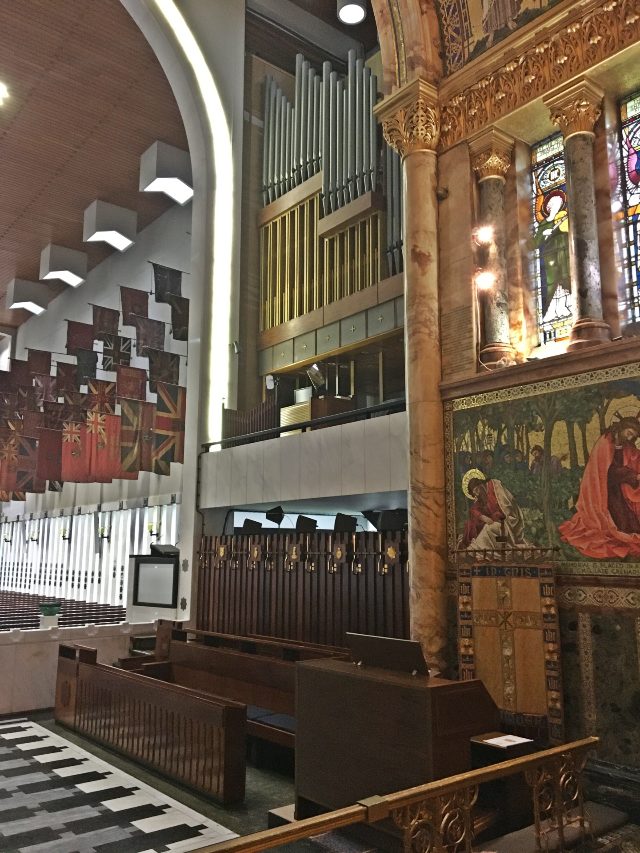
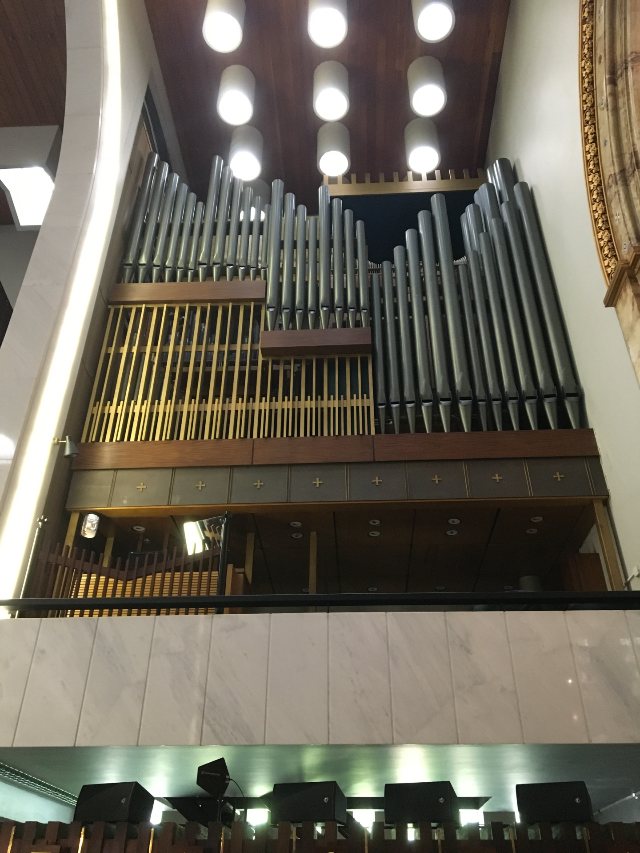
This recycling of organs is all too commonplace and rarely does the relocation of older parts result in an instrument of great quality. So after 50 years of extended use at Wellington Barracks the time has come for a new instrument to be commissioned.
In this strikingly modern interior finding suitable speaker locations was the main challenge. High locations are usually best and the only two options for that, the organ loft and the opposite gallery on the south side were ruled out. The loft would be a work site and the other gallery was often used by the band. This left us with very limited options.
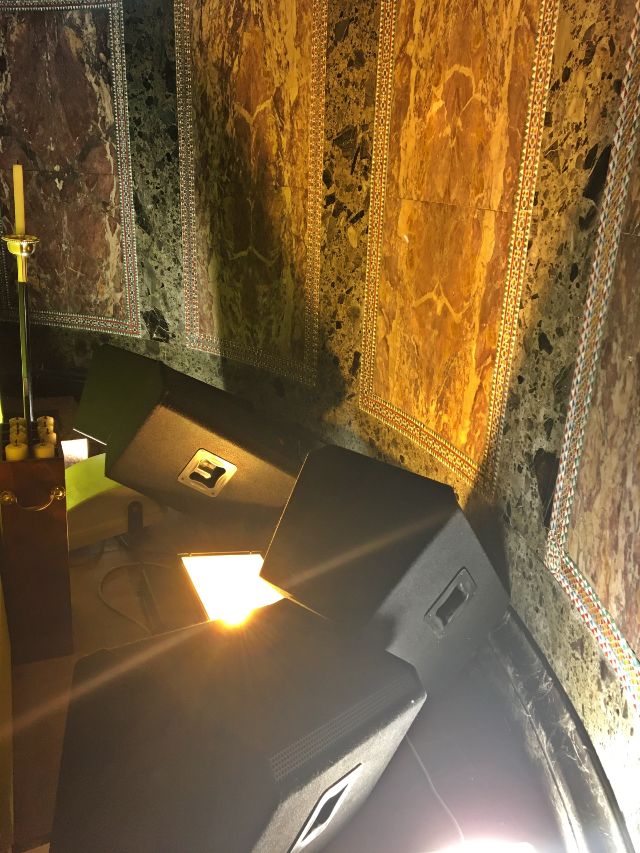
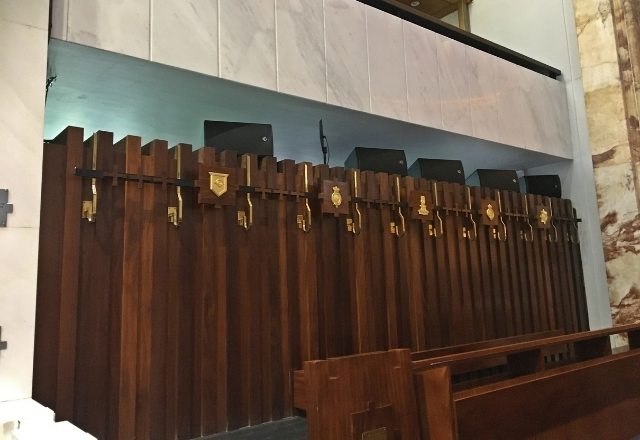
The instrument was finally set up with speakers behind the altar that use the apse roof to project into the nave and much smaller speakers set up immediately above and behind the north choir stalls. This allowed for volume to be generated that would not overwhelm the choir and place some of the quieter ranks close by for more subtle accompaniment.
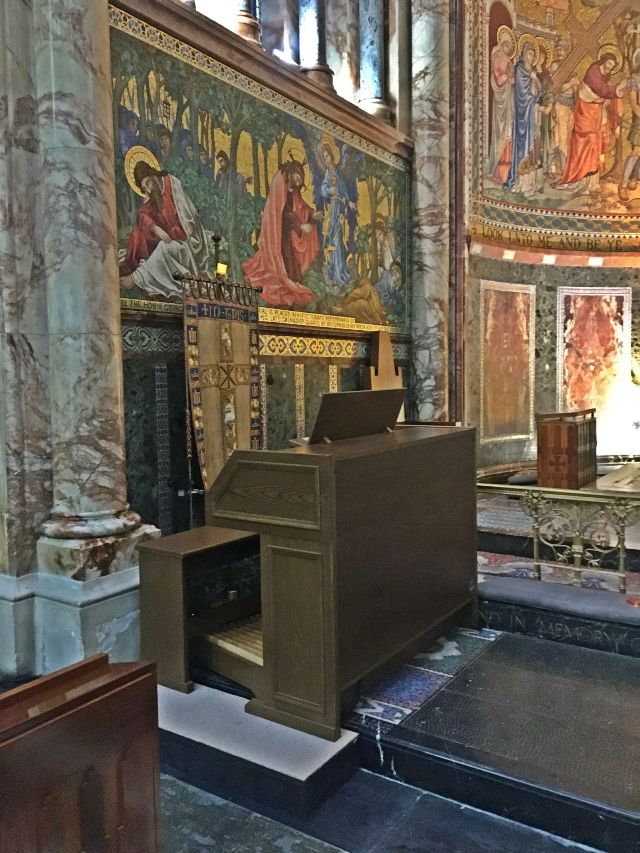
This is a complex project requiring significant engineering works to reinforce the loft structure to bear the greater weight of the new instrument. It seems our Envoy 35-F may have a few years of work ahead of it and the console may also have to move about the building when the structural work starts.
The Guards’ Chapel Organ Campaign
Concerns over the reliability of our organ have recently led the Guards’ Chapel Committee to commission a detailed condition survey of the instrument. This appraisal confirmed that it is not able to do justice to a first-class choir and military bands, owing to limitations in its design, and its age. Components are in danger of failing without warning, thus compromising the high-profile events that are held at the Chapel.
To address this critical situation, the Major General Commanding the Household Division and the Guards’ Chapel Committee have taken the decision to commission and install a new pipe organ. This new organ will support not only the Chapel’s ceremonial and weekly services but also a greater programme of recitals and concerts which make use of the Chapel’s facilities, including outreach initiatives for the local community and schools.
They are seeking to raise £1 million from private donations to provide a new organ worthy of the Guards’ Chapel. To donate now, please go to the organ appeal page on their website.
I have had a passion for church organs since the tender age of 12. I own and run Viscount Organs with a close attention to the detail that musicians appreciate; and a clear understanding of the benefits of digital technology and keeping to the traditional and emotional elements of organ playing.
